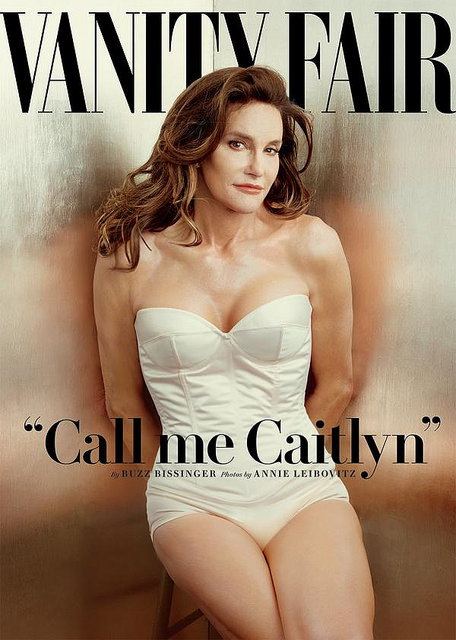I am a feminist.
I say this proudly and unapologetically, because I don’t think this is something that anyone should be ashamed of or afraid to be.
But that being said, that does not mean that I agree with everything that every feminist has ever said.
There are some feminists, for example, who present the argument that transgender women have no place in mainstream feminism. They say that transgender women are not actually women, that their experiences are very different from cisgender women’s and, therefore, they are outside of the movement. Some feminists have even made the comment that including transgender women into the discussion is essentially inviting men into women’s spaces—and that doing this will result in higher statistics of rape (because transgender women clearly want to use the women’s bathroom just so they can rape women), and/or it might force lesbians to accept penis.
This type of feminism is sometimes referred to as trans-exclusionary radical feminism, or TERF. And, personally, I have a big problem with it.
Personally, I think it is important that we include transgender women in our feminism, because transgender women are women. They are women who have experiences that are slightly different from cisgender women, but that’s the case with many women.
A black woman will experience being a woman differently from a white woman. A lesbian will experience being a woman differently from a straight woman. A wealthy woman will experience being a woman differently from a woman living in poverty. But none of these experiences are wrong, and none of these experiences should go ignored when we are talking about the issues that women, en masse, experience.
In my opinion, feminism should include everyone. This type of feminism is sometimes referred to as intersectional feminism. (And, for the record, there are more types of feminism out there than I can list off in this article, so I’m keeping it down to these two for now.)
And, more than that, the issues that transgender women face (and transgender people in general) are very relevant to our discussion as feminists.
Transgender women face violence at an alarming rate. The year 2016 saw the highest rate of death for transgender people as a result of violence, and some have speculated that violence against transgender people has only increased with the higher media representation of transgender celebrities, like Laverne Cox and Caitlyn Jenner. Thus far, in 2017, 18 transgender people have been murdered—17 of them women and many of them people of colour.
In a 2009 report, 50 percent of people who have died as a result of hate violence toward the LGBTQ community were transgender. Seventeen percent of all victims of hate crime violence toward LGBTQ people are transgender, and 11 percent are transgender women.
And fatal violence is not the only sort of violence that transgender people face either. One in two transgender people report being raped at some point in their lives, and some reports have even estimated that 66 percent of transgender individuals will face sexual assault during their lifetime. This suggests that the majority of transgender individuals are rape survivors—and rape, as you may recall, is an important matter of discussion for feminism.
According to one survey, 50 percent of transgender people have been hit by a primary partner after coming out to them.
I recall seeing a post on Facebook that I will not go into lengthy detail quoting, but within this post, the comment was made that “a man’s biggest fear is that his date turns out to be transgender” and that, “I would beat the shit out of my date if that happened.”
I wish I could say this was an idle threat, but considering the amount of violence that is reported toward the transgender community, I’m afraid it isn’t. And it doesn’t help matters that, especially in the very recent past, transgender women are frequently represented by the media as “tricking” their heterosexual, cisgendered male dates.
In the “Family Guy” episode, “Quagmire’s Dad”, Brian is shown as unknowingly sleeping with a transgender woman, and upon finding out about her gender identity, he is horrified to the point of screaming, and proceeds to vomit profusely—because that’s the sort of reaction every woman wants to get from her date.
And, yes, I know that “Family Guy” is based around shock humour, but this humour does not come out of nowhere. It plays on something within our society, and in this scenario, it seems to be the straight, cisgendered male’s fear of getting involved with a “disgusting” transgender woman—a fear that is seen again in the dramatic movie “The Crying Game,” in which the transwoman’s gender identity is played as a horrifying plot twist which, again, causes our straight, cisgendered male protagonist to vomit (though, to be fair, “The Crying Game” is much more sympathetic to Dill than “Family Guy” ever was to Ida).
Rates of suicide within the transgender community are also staggering to look at. In the U.S., 41 percent of transgender or gender nonconforming people have reported suicide attempts, compared to 4.6 percent of the overall population. These reports are most prevalent among transgender people aged 18 to 44. There are many possible reasons for this, and while reasons may differ between individuals, some of the most common include bullying, feelings of being unable to express who they truly are, and feelings of not being accepted by their family and/or community.
And, like cisgender women, transgender women are also often subject to unrealistic beauty standards. When Caitlyn Jenner’s Vanity Fair cover came out, the majority of comments focused on how beautiful she looked because she “passed” as a convincing cisgender woman, but not every transgender woman can pass quite so easily. They might not have access to hormones early enough, or they might not have access to surgery, and, if that’s the case, then they run the risk of being dismissed as “not feminine enough” to be considered beautiful.
So when feminists talk about body positivity and making sure that every woman feels beautiful, no matter how she looks, we need to make sure we’re including transgender women in this as well.
Many of these issues, in fact, are issues that feminism frequently discusses. Feminism is a massive movement that covers a broad range of topics, and there should be enough room for transgender women to be included as well. There should be room enough for all women.
When you exclude transgender women from the conversation, then you overlook the issues they face, and transgender women should not have to fight these battles alone. We should be there for them, helping them, trying to create a safer world for them.
Because the way that transgender women are treated right now is not okay, and we have the means to change that—or at least start to. All we have to do is include all of us in the conversation.
~
relephant:
On the Politics of Passing for a Transgender Woman.
An Open Letter to Caitlyn Jenner: “The Hardest Part About Being a Woman.”
~
Author: Ciara Hall
Image: Shahzeb Elahi/Flickr
Editor: Leah Sugerman
Copy Editor: Sara Kärpänen
Social Editor: Sara Kärpänen









Read 0 comments and reply